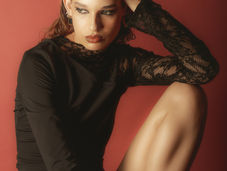Masters of Photography Review - Huxley-Parlour
- Magdalena Lapa
- Oct 28, 2018
- 3 min read
24 October – 10 November 2018
Free Entry
Huxley-Parlour is presenting the third edition of Masters of Photography, a survey of 30 works by some of the most influential photographers of the 20th Century. Despite its small size, the exhibition proves to be an absorbing experience for those interested in the medium and its development over the last 100 years.
While strolling around the gallery one cannot escape the feeling that the photographs placed on the walls look all too familiar. And while for some it may be quite exciting to see works such as VJ Day in Times Square by Alfred Eisenstaedt or Richard Avedon’s Dovima and Elephants in a physical format, not everyone will feel similarly. Chances are that if you are even vaguely interested in photography, you will not be blown away by the content straight away. To get the most out of the exhibition then it is helpful to look at it from a nostalgic perspective rather than viewing it as a novelty. If we do that, we will walk out of Huxley-Parlour with a newly found appreciation for photography.

VJ Day in Times Square, New York, Alfred Eisenstaedt, August 14, 1945
The works presented span over a hundred years, the earliest one being a photograph of a family taken by August Sander in 1913 and the latest one the expressive Blow up by Ori Gersht from 2016. Comparing these two photos can give us a feeling of what the whole exhibition successfully manages to achieve. By placing the quite reserved, stiff image of the family against the dynamic, and almost Pollock-like piece by Gersht, we are made to notice that the subject matter is not the only thing that has changed in photography overtime. The variety of works presented, all distinct from one another in genre, setting or historical period makes us aware of how photography progressed from a practicality of capturing moments to a medium used for artistic expression. What seems to be a random selection of works is actually a purposeful choice that pushes for a greater context and produces a more coherent picture of the medium. Choosing to place such a great number of styles in one room forces the viewer to draw constant comparisons and parallels between the works. This results in a much more demanding experience as oppose to if we regard each of the pictures individually.

Blow Up, Untitled 19, Ori Gersht, 2016
This however does not mean that the works cannot be admired separately. While some common threads could we weaved through the photographs, it appears that the emphasis is also put on the subjects photographed and the people behind the camera as opposed to trying to create a cohesive narrative. This makes the experience of examining the works much more nostalgic and personal. Instead of focusing on trying to decipher the curator’s vision we can relate directly to the art itself. Getting rid of the “what’s the purpose of this” barrier makes it so that we are directly pushed to think about the people captured in the photographs, each bearing witness to their own realities, and about the artists and what they wanted to capture in any given moment.
Each of the pieces carries a history of its own and contributed to the medium in a particular way. One of the photos that is a perfect example of that is an almost life-sized print of Audience 4 by Thomas Struth. It is a part of the famous series depicting audiences at museums from the perspective of works of art themselves. After first abandoning the project due to legal limitations, Struth finally carried it out for the 500th anniversary of Michelnagelo’s David. The photograph is a beautiful example of how an image can be used to question the human activities we got used to considering as normal, in this case, viewing art. Each of the photos present in the exhibiton tells us a story in a similar way, making us question and think of our day to day lives. We can therefore draw a further conclusion from this- the exhibition presents photography as a truly humanistic medium of art- possible of depicting life as is, giving people some food for thought, or simply capturing beauty.
While looking at the photos one cannot held but ask the question: “Where does photography go from here?”. While it would be hard to give a definite answer to that, attending the exhibition might help us to get closer. Masters of Photography is a perfect exhibition to attend if you want to deepen your understanding of photography, or if you’re just starting out and would like to get some context on the history of the medium.
























Comments